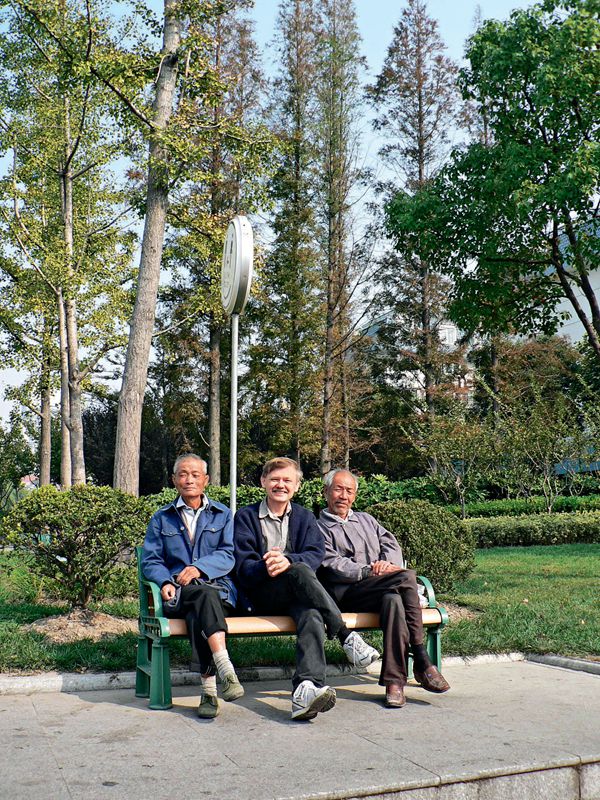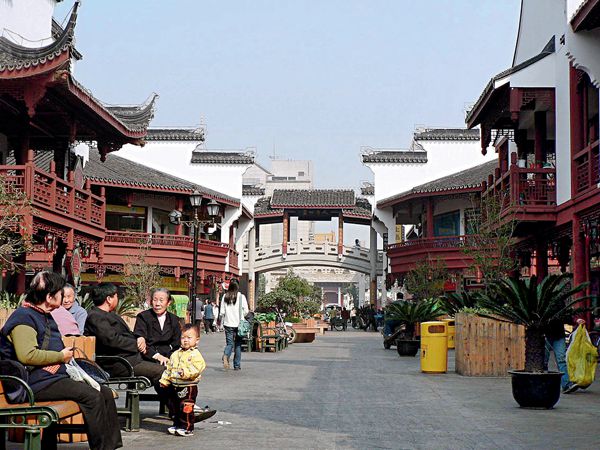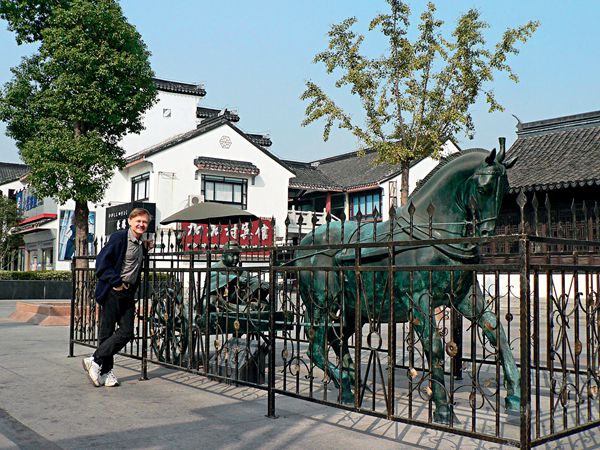By BILL BROWN
By BILL BROWN
I’VE driven some 200,000 km across China, but for over a decade I always detoured around Shanghai because it wasn’t “real China.” To my knowledge, Shanghai was nothing but mud flats until 1844, when Westerners built their international settlement on the now famous Bund. But when I did eventually explore the world’s largest city by population, I learnt that Shanghai is not only a modern global financial center but also has a rich history – especially in Songjiang District.
According to Chinese historical records, about 1,300 years ago, an imperial official abandoned power and position because he was homesick for the trout and vegetables of his birthplace – Song- jiang, the cultural heart of Shanghai. Similar examples, historical and modern, are indeed common throughout China. I’ve even known people in my second home, Fujian Province, who have acted similarly. Laozi’s maxim, “Man follows nature” reflects the Chinese people’s age-old reverence for the land, and the ancient Chinese dream of retiring to one’s hometown to farm, fish, and perfect one’s calligraphic, music or painting skills.
Songjiang embodied this ancient Chinese ideal until 1844, when Westerners forced the future upon Shanghai. Today, Shanghai is more prosperous than ever – but at a price. With such a frenetic pace of life, people barely have time to think, much less dream of simpler days. Shanghai’s solution is Songjiang, a planned garden city where active professionals can enjoy a high quality of life before they retire.

Bill Brown with local senior citizens in Songjiang Park.
As there is no single “ideal life,” Songjiang created its “One City, Nine Towns,” with each of the latter designed according to different themes – traditional/modern or Chinese/Western. Songjiang embraced Shanghai’s Western heritage through architectural features borrowed from England, Scandinavia, Spain, Germany, Italy, and Holland. I felt like I was back in England while strolling through Thames Town, which has a pub, fish and chip shop, and church modeled on Bristol’s Christ Church.
The famous Thames Town is a large residential area built in 2004 in the British tradition and equipped with everything its residents could possibly need. The lakes, rivers, and trees that surround Georgian and Victorian style villas and apartments make the community a popular setting for wedding photos. Thames Town is a tranquil oasis from the hustle and bustle of Shanghai City, and a good sightseeing spot.
So how did the Songjiang leaders pull off such a complex venture? Rather than reinvent the wheel, they “learned from the best.” Songjiang sent delegations to study city management in Paris, architecture in Aberdeen, environmental sanitation in Singapore, cultural preservation in Venice, water conservation in Sydney, and waste treatment in several German towns.

Songjiang's citizens enjoying their leisure time.
Greening is an overarching priority for every community. Songjiang achieved 46 percent green coverage a decade ago, and its green space per capita has since expanded to 25 square meters. One is never farther than 500 meters from a park or garden in Songjiang. As a town with dozens of rivers, Songjiang also has many water-themed parks, and Venice-style gondolas that are as popular as taxis.
The Chinese saying, “plant trees for future generations,” is nowhere more apt than in Songjiang, situated on the formerly treeless Yangtze River silt plain. Each of its trees was planted and has since been tended by volunteers, and there are laws to protect every tree, large and small. Songjiang policies require that roads detour around tree areas.
The botanical diversity of this once barren plain attracts horticulturalists from throughout China’s mainland, Hong Kong, and Taiwan to buy trees, shrubs and flowers.
But Songjiang’s Chinese Dream is stillborn if professionals must retire before they can enjoy it. Songjiang therefore promotes tourism, education, and hi-tech to draw talent and make the dream affordable. The city is home to more than 50 Fortune 500 companies, but its most strategic venture is University Town. China’s largest higher education hub, the center offers innovative programs in international studies, business and economics, commerce, engineering, political science, and law.
Songjiang’s Shanghai Institute of Visual Art also capitalizes upon Shanghai’s reputation as the “birthplace of Chinese cinema.” The district is site of the Shanghai Film Studio, China’s largest from 1949 to 1959, and still one of the country’s Top Three. I visited it when I played the part of Admiral Elliott in the Lin Zexu TV series.

Bill Brown admires a sculpture in Songjiang.
As a history buff, I was delighted at Songjiang’s preservation of historic heritage. For centuries, “Songjiang clothed the world and paid much of China’s taxes” – all thanks to Lady Huang Daopo (1245-1330). At age 10, Huang fled from her impoverished hometown to Hainan, where the Li tribe taught her weaving and spinning. At age 50, she returned to Songjiang, but not to retire! Huang invented weaving machines (looms, fluffers, crushers), taught locals to spin and weave, and so single-handedly created the greatest textile center of the Ming and Qing dynasties (1368-1911). Today, Songjiang sponsors organizations and classes that perpetuate venerable textile skills and crafts, as well as 400-year-old embroidery, papercutting techniques and Shanghai Opera.
Songjiang’s many well-preserved historic sites include the 1,500-year-old Song Family Ancestral Temple, Tang Dynasty Buddhist Scripture Tower, Song Dynasty Square Tower, 14th century Yuan Dynasty Mosque, and Qing Dynasty Zuibai Pool. The Sheshan Basilica, built by Jesuits in 1863 (using Fujian granite!) and rebuilt in 1935, is the largest Catholic Church in the Far East.
When I retire, maybe I’ll move to Thames Town in Shanghai’s Songjiang. If the Chinese can retire on trout and veggies, I can give fish, chips and dark ale a try!
DR. BILL BROWN is a professor at the Xiamen University MBA Center and Academic Director of its OneMBA program.